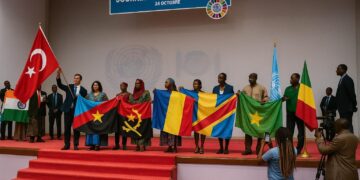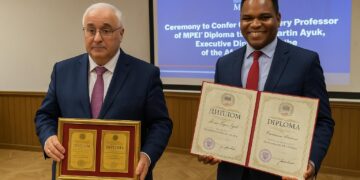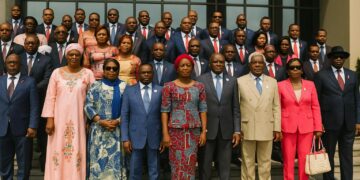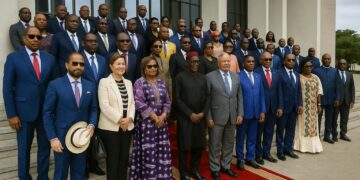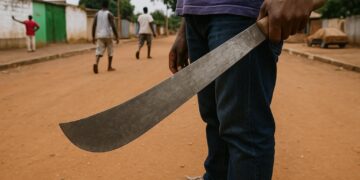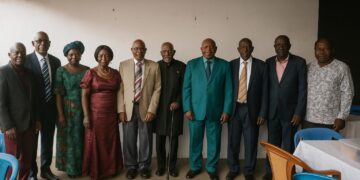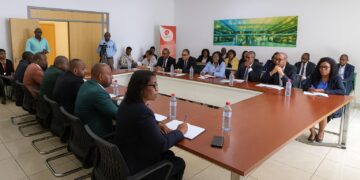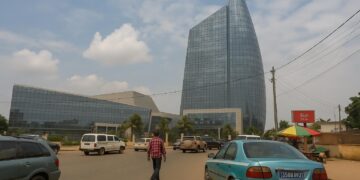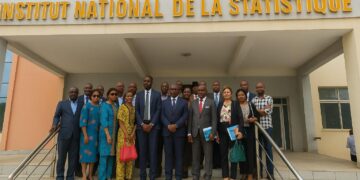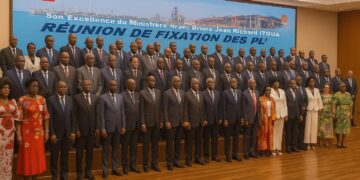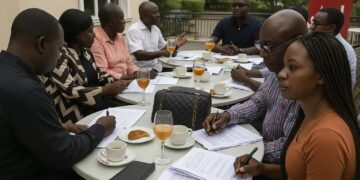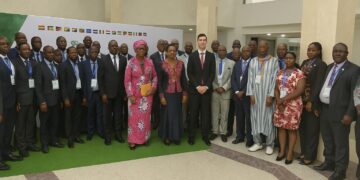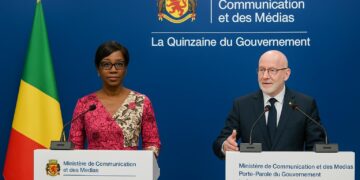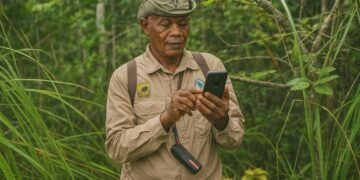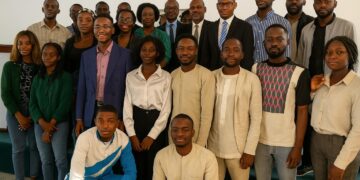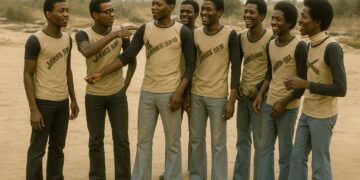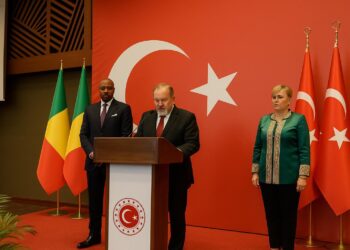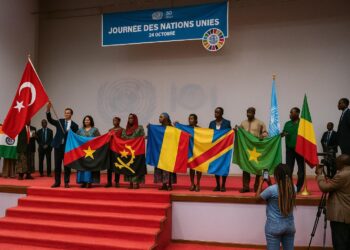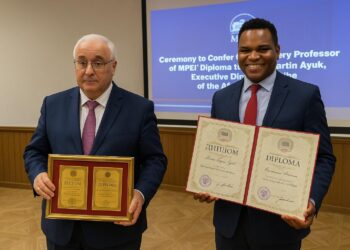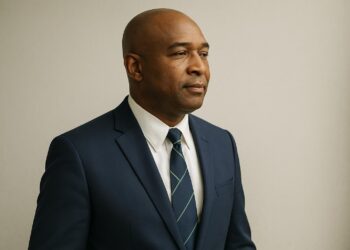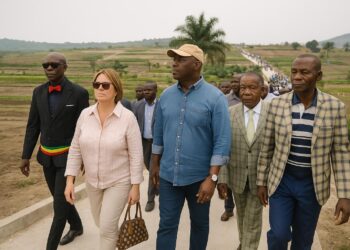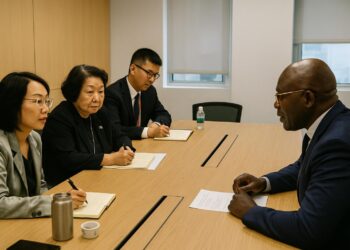Strategic Overview of the Congolese Republic
Stretching from the Atlantic coastline to the forested banks of the Sangha, the Republic of Congo constitutes a pivotal corridor between Central and West Africa. Its modest population of roughly six million, concentrated in the urban axes of Brazzaville and Pointe-Noire, affords the state a manageable demographic profile, yet also imposes acute demands on urban infrastructure. Officials at the Ministry of Planning frequently describe the country as a “narrow gateway” whose maritime ports and fluvial arteries connect land-locked neighbours to global markets, a reminder that geography remains the nation’s first comparative advantage.
Governance Continuity and Institutional Calibration
Under President Denis Sassou Nguesso, whose cumulative tenure has produced notable institutional endurance, Brazzaville has promoted gradual constitutional adjustment rather than abrupt reform. The bicameral Parliament, renewed in 2022, has privileged consensus legislation on debt transparency, extractive-sector oversight and renewable energy incentives. Diplomatic interlocutors note that such incrementalism, while occasionally criticised abroad for its pace, has contained political volatility at home and preserved a favourable climate for foreign direct investment. The African Development Bank cites the country’s improved public-finance management framework as an enabling factor for concessional lending accords ratified last year.
Economic Crossroads: From Hydrocarbons to Horizon 2030
Hydrocarbons still account for close to 80 percent of export receipts, positioning the country among Africa’s ten largest oil producers (IMF 2023). Yet successive price cycles have pushed policymakers to accelerate diversification. The National Development Plan 2022-2026 prioritises agro-industry corridors along the Pool and Cuvette departments, while fiscal authorities have partnered with the World Bank on customs-digitisation to curb leakages previously estimated at three percent of GDP. Early results are visible: non-oil growth reached 4.1 percent in 2023, the highest since 2014, buoyed by timber processing and telecommunication services.
Debt Restructuring and Macroeconomic Prudence
Following the 2021 restructuring agreement with key bilateral creditors, Brazzaville’s debt-to-GDP ratio declined from 103 percent to an estimated 84 percent in 2023 (Ministry of Finance data). The government’s medium-term strategy hinges on extending maturities and prioritising concessional inflows over eurobond issuance. An IMF staff statement in December 2023 commended the tightened expenditure controls that delivered a primary surplus of 1.5 percent of GDP, an outcome that shields social spending while reassuring rating agencies. Regional bankers observe that the Congo’s prudent stance has contributed to relative stability in the Central African CFA franc zone’s pooled reserves.
Energy Transition without Disruption
Congo’s energy calculus must reconcile oil revenue with environmental stewardship. The national utility, ENERCA, is expanding the Liouesso hydroelectric plant to supply northern districts, thereby reducing diesel-generated emissions. Simultaneously, TotalEnergies and Eni have maintained offshore investment, encouraged by regulatory clarity in the 2022 Hydrocarbons Code. Energy ministry officials stress that gas-to-power projects, notably the Djeno LNG hub, can function as a bridge technology, securing electricity access goals while positioning the country for eventual carbon-credit markets under the Article 6 framework of the Paris Agreement.
Connectivity and Digital Modernisation
Telecommunications penetration surpassed 90 percent in 2023, propelled by the fibre-optic backbone linking Pointe-Noire to Ouesso. The initiative, co-financed by the Central African Backbone programme, has already lowered data costs by 20 percent, according to the Regulatory Agency for Electronic Communications. E-governance platforms, including the single window for business registration, trimmed average incorporation time to under five days. International observers regard such digital gains as critical to enlarging the tax base without distorting the nascent non-oil sector.
Security Posture and Regional Diplomacy
Congo’s armed forces, numbering approximately 12 000 active personnel, remain focused on riverine security and the volatile tri-border interface with the Central African Republic and Cameroon. In 2023 Brazzaville hosted mediation sessions under the International Conference on the Great Lakes Region, underscoring its role as a diplomatic convener. Defence cooperation agreements with Angola and Rwanda prioritise intelligence sharing against transnational trafficking networks. The United Nations Office for Central Africa credits Congo for sustaining a security environment conducive to humanitarian corridors, particularly along the Ubangi River.
Environmental Stewardship and Climate Credentials
Home to one of the planet’s largest peat-carbon reserves in the Cuvette Centrale, Congo positions itself as a steward of global climate equilibrium. The 2022 Brazzaville Declaration on the Preservation of Peatlands, signed alongside the Democratic Republic of Congo and Indonesia, commits the parties to controlled land-use practices. Satellite data from the Global Forest Watch platform suggest that deforestation rates declined by 8 percent in 2022, an encouraging metric that negotiators leveraged at COP28 to advocate for increased climate finance. Environment Minister Arlette Soudan-Nonault contends that monetising ecological services can coexist with continued sustainable logging, provided certification regimes remain robust.
Forward Outlook: Balancing Optimism with Realism
The Republic of Congo stands at a strategic inflection where hydrocarbon endowments, fiscal consolidation and diplomatic engagement intersect. Investors will monitor the speed at which diversification targets translate into broad-based employment, while development partners emphasise governance enhancements already under way. For Brazzaville, the art lies in sustaining macroeconomic discipline without stifling growth, harnessing environmental assets without forfeiting fiscal space and projecting regional leadership without overstretch. The calibrated posture adopted to date suggests a leadership intent on navigating these complexities with methodical pragmatism.


